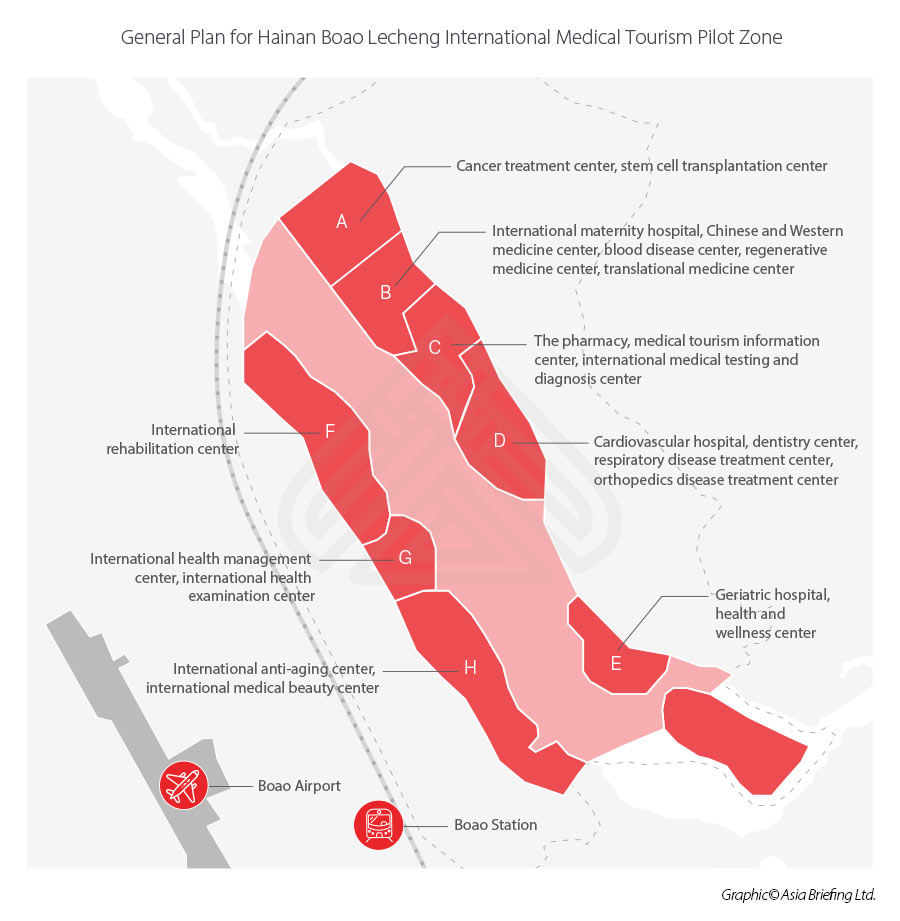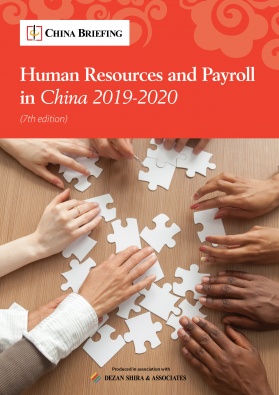Hainan Medical Tourism Zone: New Pilot Policies Rolled Out
- The Hainan medical tourism zone will provide comprehensive medical services as well as a green medical convalescence environment to attract domestic and foreign tourists.
- Located in the Hainan Free Trade Zone, the pilot medical tourism zone offers investors key incentives to set up in the area.
- The zone is seeking commercial investment and cooperation with foreign institutions, including international hospitals, third-party testing institutions and laboratories, medical colleges, pension insurance companies, and medical tourism institutions.
On September 16, China released a new implementation plan to promote the development of Hainan medical tourism zone – the Hainan Boao Lecheng International Medical Tourism Pilot Zone.
The new implementation plan sets overall goals for the zone:
- By 2025, the in-zone medical techniques, medical devices, and drugs should be at par with international best standards; and
- By 2030, the zone should become a world-class medical tourism destination and medical technology innovation center.
Medical services and industries in the zone
Just as its name implies, the Hainan medical tourism pilot zone was designed to provide various medical services and a green medical convalescence environment to attract domestic and foreign tourists.
Earlier in 2013, China’s State Council approved the establishment of Hainan medical tourism zone in Qionghai, a city in eastern Hainan island where the Boao Forum is held every year.
After major construction work finished in 2015, the zone started to develop industries for medical treatment, health management, care and rehabilitation, medical beauty and anti-aging, and research – intending to make medical tourism a pillar industry in Hainan.
By far, the zone has secured the following – signed on 51 academician and expert teams, introduced 81 investment projects, and put into operation nine medical institutions. However, further development of the zone has slowed down due to imperfect operation mechanisms, incomplete policy implementation, and lack of professional talents.
Why China is getting serious about the zone
With the establishment of Hainan Free Trade Zone (Hainan FTZ), the government is determined to boost the medical tourism zone project and seize market opportunities created by the increased demand for medical products and services.
Shen Xiaoming, Governor of Hainan Province, said in a recent news briefing that around 600,0000 mainland Chinese go abroad to seek higher quality medical services and drugs every year because importing foreign medical equipment and drugs takes too long – about five years.
According to the Hong Kong Trade Development Council (HKTDC), in 2018, the global spending on health products and medical services was around US$4.484 trillion. Mainland Chinese residents contributed US$250 billion to that and the figure is expected to grow by nine percent annually between 2019 and 2024.
Given this market opportunity, China is rolling out preferential policies to facilitate the pilot zone’s capacity to attract both domestic outbound patients and overseas consumers.
Key policies and incentives in the plan
The plan seeks to implement changes in the pilot zone in four directions – establishing a cluster of high-level medical service institutions and scientific research institutions, developing high-quality medical tourism services, further opening up the pilot zone, and improving the regulatory system of the pilot zone.
The following are among the new measures introduced to attract greater investment in the zone:
- Allowing in-zone medical institutions to import much needed foreign drugs and medical equipment that are not yet approved by the top drug authority in China;
- Allowing patients to take imported drugs of limited dosage (which have not been registered in China) out of the pilot zone for personal use;
- Allowing research hospitals to collect real-world clinical data from patients using imported drugs and medical devices. The data could be used to expedite the registration and approval process for innovative drugs and medical instruments to enter China;
- Encouraging state-level public hospitals to enter the zone. Three to five public hospitals will be authorized to franchise brand, trademark, and technology to medical institutions in the pilot zone; and
- Building an evaluation center for imported drugs and medical devices to facilitate the clinical use of imported drugs and medical devices.
In October 2018, China issue an overall plan for Hainan FTZ, which aims to turn the whole island into a free trade port and prioritizes the development of three sectors – tourism, modern services, and high-tech industries.
The Hainan Medical Tourism Zone is another project taken by the Chinese government to open up Hainan, take advantage of Hainan’s position as an FTZ, and promote the province’s medical tourism industry.
In this medical tourism pilot zone project, the government will act as an advocate, planner, and regulator while private institutions can capitalize on pilot policy benefits to catch investment opportunities.
Currently, the pilot zone is actively bringing in commercial investment and seeking co-operation with foreign institutions, such as international hospitals, health management institutions, third-party testing institutions, medical colleges, laboratories, pension insurance companies, and medical tourism institutions among others.
Investors should pay attention to the developments in this area, given the scope and scale of growth prospects.
About Us
China Briefing is produced by Dezan Shira & Associates. The firm assists foreign investors throughout Asia from offices across the world, including in Dalian, Beijing, Shanghai, Guangzhou, Shenzhen, and Hong Kong. Readers may write to china@dezshira.com for more support on doing business in China.
- Previous Article Tax, Accounting, and Audit in China 2019-20 – New Publication from China Briefing
- Next Article How to Develop an Effective Employee Retention Strategy in China






